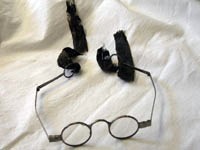Der Brief - in Klopstocks neuer Rechtschreibung geschrieben - ist an Gottlob Friedrich Ernst Schönborn adressiert, zu Händen Angelika Kauffmanns. Er besteht aus 4 Seiten, wovon 3 Seiten beschrieben sind und auf der 4. Seite die Adresse vermerkt ist. Auf der 1. Seite sind die ersten drei Zeilen für Schönborn, in denen Klopstock ihm erklärt, warum er den Brief an ihn adressiert. Der weitere Text ist für Angelika Kauffmann. Klopstock beschreibt ihr, wie er die Zeichnungen, die sie als Illustration zum "Messias" anfertigen wollte, sich gedacht hatte.
Der Brief im Klopstockhaus fand Eingang in die Hamburger Klopstockausgabe, die ab 1974 erschien.
en

